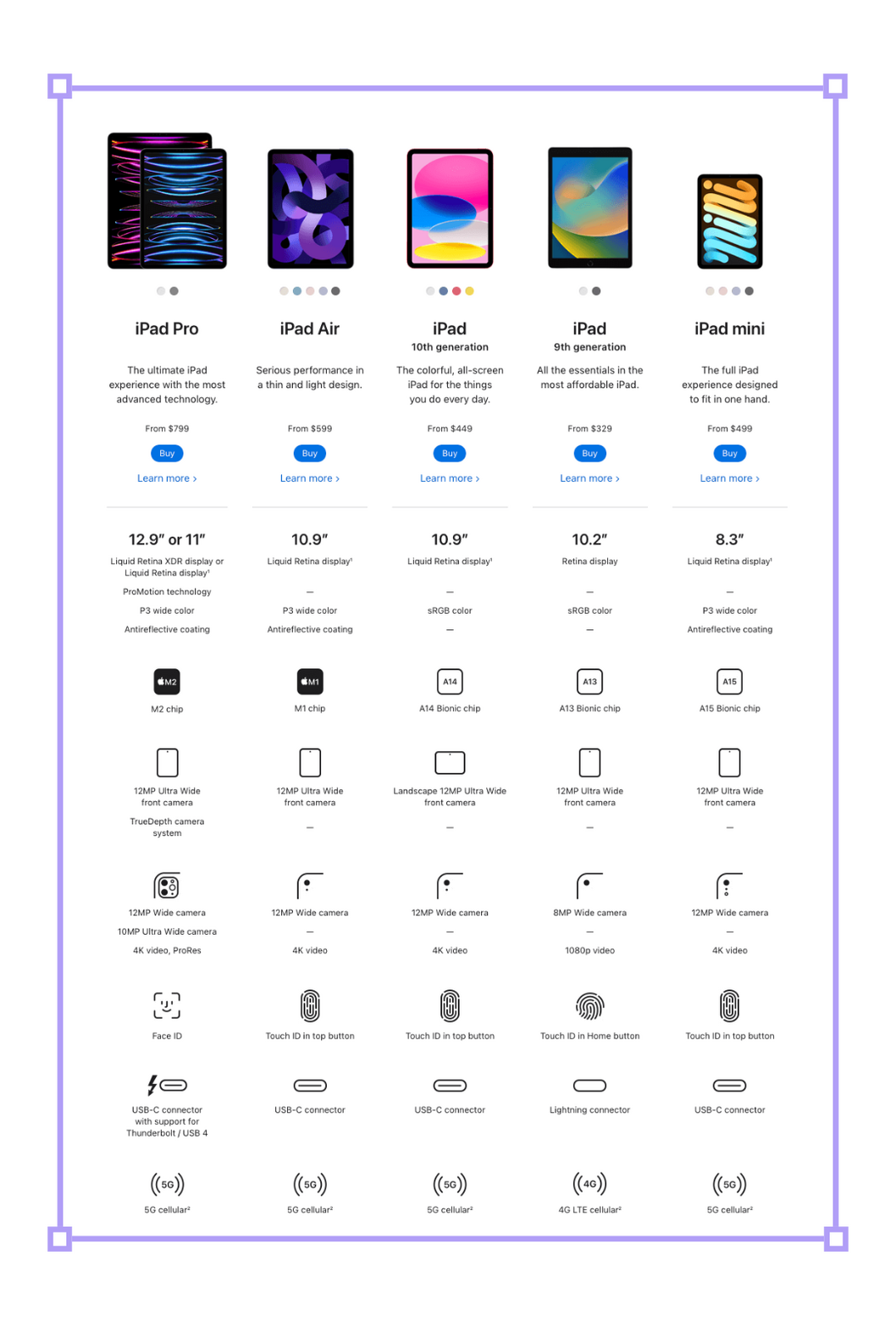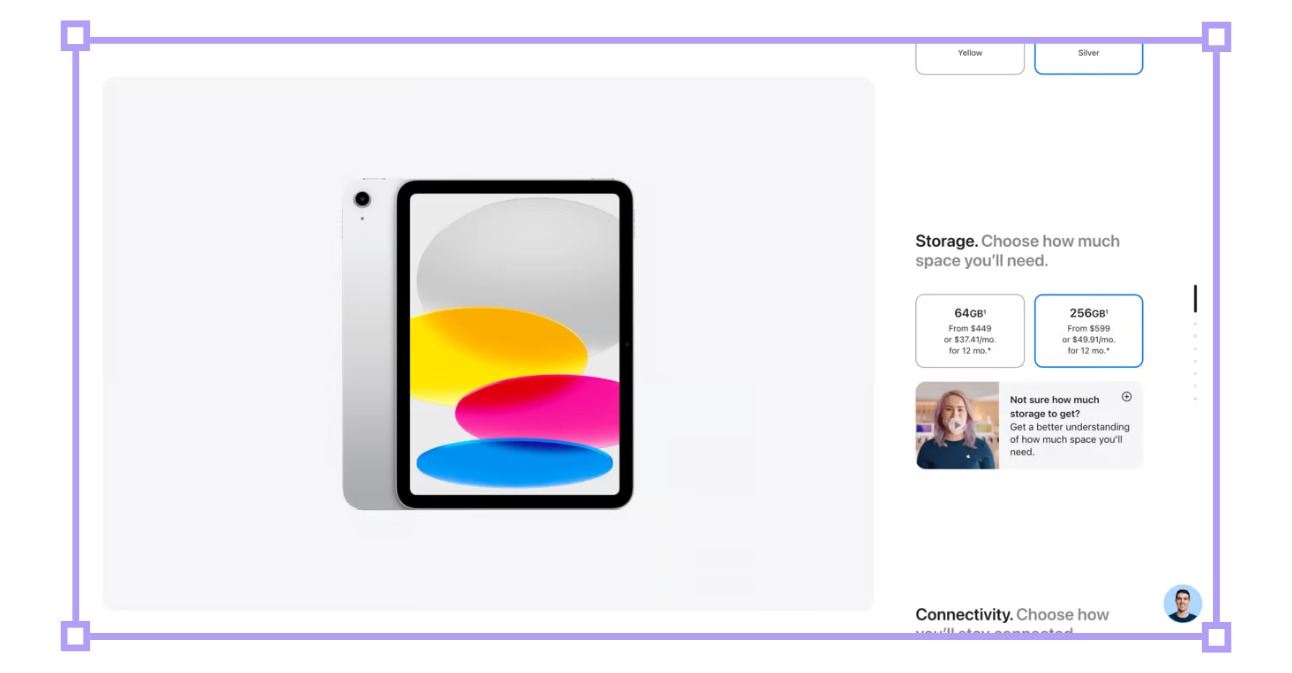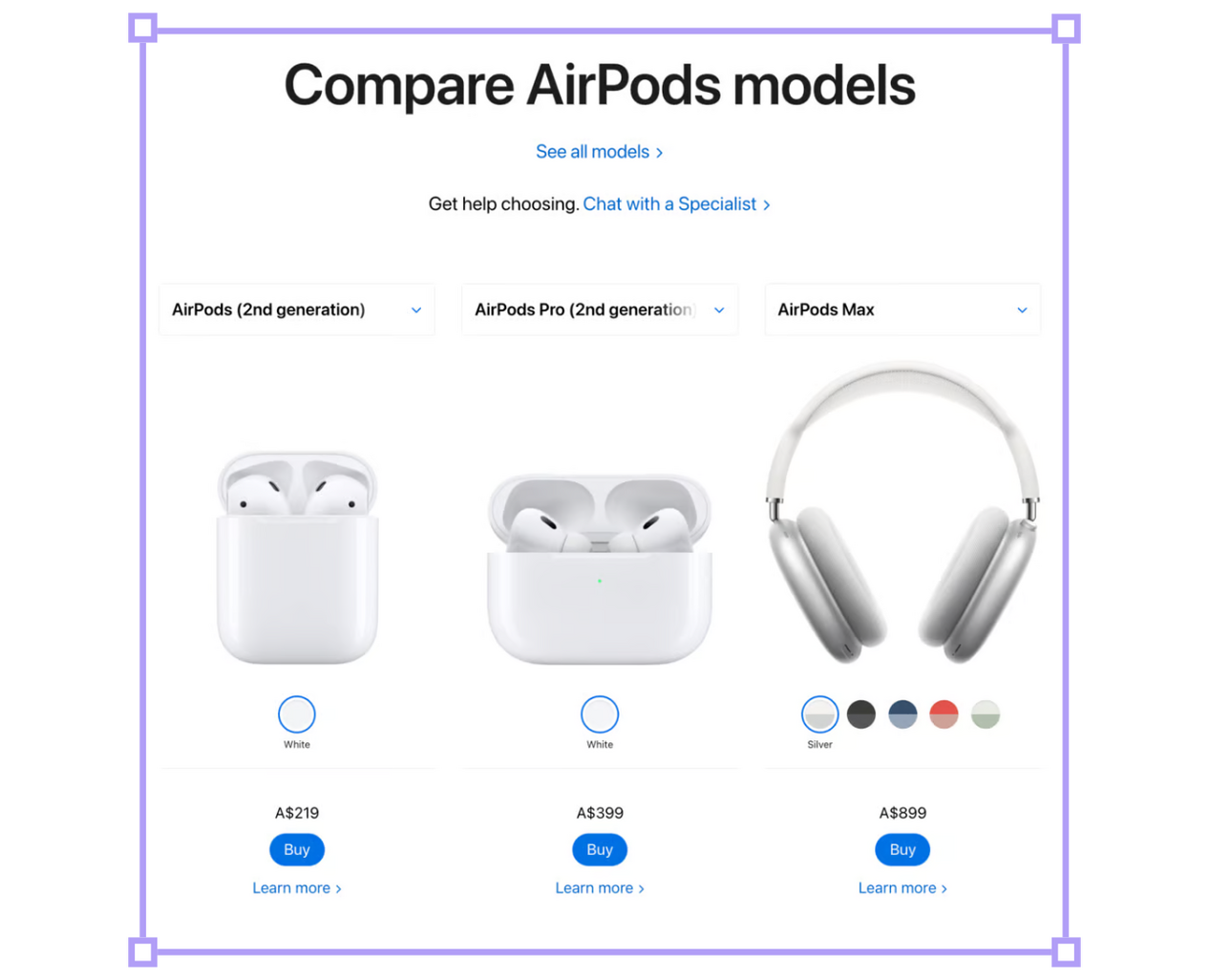
You're in, welcome! 🎯
From now on, you'll get our ~weekly newsletter containing 3-minute strategy case studies that make you a more effective strategist in the internet-era.
You'll also receive regular behind-the-scenes emails with stories and resources from around the Strategy Breakdowns ecosystem.
Now let's get you started with a quick strategy case study on Apple...


How Apple makes you spend more
Ever wondered why whenever you buy MacBook, iPhone, iPad etc, you always end up spending more than intended?You're not alone.
Apple has mastered the art of making their upsells seem irresistible through a carefully architected pricing strategy.I recently picked up an iPad* and couldn’t help but notice a handful of neat tactics they leverage throughout the purchase journey to make you spend more.
Here’s how they work, and how to utilise them yourself.Enjoy.— Tom
* … ok maybe it was an iPad Pro


Chess Move
The what: A TLDR explanation of the strategy
You open the Apple website, looking to buy an iPad.You’re presented with 5x options:
$329 (iPad 9th Gen): The most affordable iPad.
$449 (iPad 10th Gen): The newer iPad with a better display, chip, camera, and USB-C.
$499 (iPad Mini): The compact iPad that fits in one hand.
$599 (iPad Air): The thinner and lighter iPad with a laptop-grade chip.
$799 (iPad Pro): The best iPad money can buy.

Like most prospective customers, your needs would be met with the cheapest iPad on offer…but you end up spending an additional 82% (+$270) on the iPad Air.Why is that?The answer begins with the “Center-Stage Effect”:When customers are presented with a range of choices, they perceive the middle options to be the best value-for-money.Most buyers don’t consider themselves a power-user needing a ‘Pro’ device.But there’s also natural aversion to buying a ‘previous-gen’ device.


Breakdown
The how: The strategic playbook boiled down to 3x key takeaways
1. Incremental upgrades
Due to the “Center-Stage Effect”, you’re likely to initiate your purchase flow with the 10th Gen iPad.After choosing a colour, you’re asked to “Choose how much space you’ll need”: 64GB or 256GB.For 4x the storage, it’s just an extra $150.One scroll later, you must “Choose how you’ll stay connected”: Wi-Fi only, or Wi-Fi + Cellular.Again, another $150.Each upsell is introduced one-by-one, taking up the entire viewport, rather than all at once to gauge them holistically.As you assess each incremental upsell, "Commitment Bias" stops you from reverting decisions you previously committed to.Whether you picked extra storage or cellular connectivity, it won’t take long to realise that the extra $150 you’ve mentally parted ways with could instead cover upgrading to the iPad Air.When evaluated against the equally-priced storage or cellular add-ons, getting the Air feels like a no-brainer.

2. Win the persuadable cohort
There are 3 cohorts of iPad buyers:
People who want the cheapest iPad.
People who want the best iPad on the market.
People who want the iPad with the best value-for-money.
For Category 1 buyers, no amount of extra functionality will justify spending any more than necessary for core features like checking emails and watching Netflix.Category 2 buyers go straight for the iPad Pro, along with all the bells and whistles, knowing they’re getting the best tablet money can buy.Category 3 buyers are the “swing voters” - they may have an initial preference for cheaper cost or higher performance, but ultimately they make decisions based on a value assessment of options presented to them.Apple’s pricing ladders primarily maximise the Average Cart Value (”ACV”) of Category 3 buyers.
3. Drive value across the ecosystem
60% of Apple customers own 3 or all 4 of the main Apple devices iPhone, iPad, Apple Watch, and Mac (CIRP, 2023).Apple uses variations of the same strategies to incentivise upgrades across each device range:Prior Gen → Current Gen
Faster performance
Additional storage
More connectivity
“Mini” / “Max”
“Air” / “Pro”And then there’s peripherals.Plan to draw, write, create? Get the Apple Pencil.Spend a lot of time typing? Get the Magic Keyboard Folio.Tie it all together with some AirPods that seamlessly work across all devices…or maybe AirPod Pros…
or even AirPods Max!



That’s all for today’s case study!
Want to dive deeper?
If you enjoyed this, you should check our flagship product StrategyHub.It's shows you how to make better strategic decisions using an Information Advantage System so you can add more value at work and advance in your career.